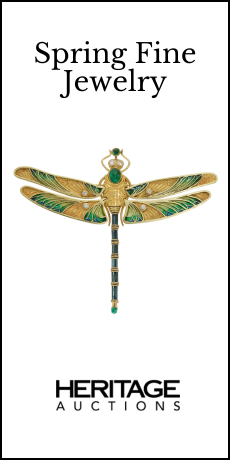April 24, 2016
BY JUDY CARMACK BROSS
For Dwight Cleveland, it is all about la chasse, the hunt that drives many collectors. Like Indiana Jones, Dwight launches worldwide searches for treasure. But for him, treasures take the form of rare movie posters, not the Holy Grail. But, yes, Raiders of the Lost Ark is part of his collection, a rare Egyptian poster found in a flea market in Cairo. It is one of a kind, like Dwight.
“Barely a day has gone by in the last 40 years that I haven’t pursued a lead of some sort. I’ve been the one at the flea market with my flashlight at 5:30 a.m., searching auction sites worldwide in antiques ad collectable journals, building rapport with pickers, elbowing my way at conventions to be first at dealer’s tables, researching theatre owners from the 1940s in all 50 states, tearing down walls to discover posters used as insulation, and basically hunting stuff down like big game.”
“A lot of well-known collectors – Leonardo DiCaprio, Steven Spielberg, and John Landau are among the most passionate – use the traditional method of hiring an art consultant and working with a specific dealer to help build their collection. That had no appeal to me. Instead, seeking out all my own relationships and digging things up at the source is my way to go.”
Dwight’s expeditions have taken him from attics in Havana to trailer parks in Des Moines, all of the auction houses of Europe, flea markets in Auckland (where he discovered a world class collection of horror movies), and to Israel where he uncovered one of his most significant treasures.
“My poster for Schindler’s List is in Hebrew – I had never seen one of those before. It meant so much more than just a poster, it was the most powerful statement about the Holocaust.”
Dwight’s posters and knowledge capture film history: from the pre-nickelodeon days, when posters were all about educating people about the movie experience, showing audiences watching “flickers,” to today, when, despite trailers and the internet, posters still advertise movies. How much fun to sit down with Dwight to learn more!
I remember that you first got interested in poster collecting in boarding school. Will you describe that?
The art teacher where I attended high school was a major early collector in the field and he had posters hanging in his office and on the department walls. All the students thought he was a bit crazy and eccentric, including me. Then, one day, he came back from a buying spree and showed us a small stack of 11” X 14” lobby cards he had salvaged from a fire at another collector’s home, and I immediately fell in love with one scene card from WOLF SONG, a 1929 film with Gary Cooper and Lupe Velez. The graphics were particularly striking: the Deco image, the saturated colors, and the symmetry of design all reached out and grabbed me by the lapels. I just had to own it!

Though not Wolf Song, another great piece is this Spanish-language poster for one of Gary Cooper’s more famous films, High Noon.
What was your first poster? and is there one that you love most of all?
WOLF SONG was theoretically my first, but it took some wrangling to secure it. At the time, posters were rarely sold. Instead, they were traded among collectors, so one had to have “tradable inventory” to lure stuff away from others. I lived in Los Angeles after high school, which at the time, along with New York, was an epicenter for film posters. So, armed with Professor King’s “want list” I scoured the shops until I finally found something that he would accept in trade. And, to give you an idea of how rare these things are, after 40 years, I’ve never seen a duplicate of that specific card. And I’ve turned over a lot of rocks. I started college in New York City a year later, so early on I had my finger on the pulse of all the main dealers and collectors.
Do you have a favorite poster?
Parents squirm when having to answer any questions about who or what is the favorite! At my peak, I’ve had as many 45,000 posters from 58 countries. Now I’m down to about 4,000 of my personal collection all-time favorites. I was asked to give a small speech a few years ago and pulled out about 500 things I just absolutely had to share with the audience. After some reflection that would have taken hours, so I pulled out my machete and narrowed it down to about 50. I’m still not quite sure how I did that, though.
You have found posters all around the world. I would love a couple of stories about some of your most intriguing hunts.
Several of the best stories are contained under the Press Coverage tab on my website (www.dwightclevelandarchive.com). Before attending business school in 1985 (which is what brought me to Chicago), I purchased a round-the-world airline ticket on TWA and spent 9 months skiing the steepest slopes, fly-fishing spring-fed rivers, scuba-diving the most spectacular reefs, and hunting down that most elusive of art forms: the vintage film poster. It has been a wild ride and the stories and individuals I’ve met and befriended are now the treasure beyond the collection itself. There is definitely a book in me aside from the coffee table picture book I’m now working on, which will extoll the exploits and strategies of a serial art purchaser and all the crazy adventures in building my collection.
You decided to sell many, but are collecting again. Are you looking for very specific posters?
At this point in my collecting, most of what I’m looking for I don’t even know I want until I see it. These are usually beautiful one-of-a-kind silent film posters that bubble up from time to time. I always had my own personal collection of the things I truly love, first looking at the graphics, then weighing film importance, stars, and the vintage. Because I was ravenous in terms of competing with other dealers and collectors buying large groups, I put aside things that were associated with major awards (Academy winners, IMDb, and the AFI Top-100), things that were, in effect, vetted by a higher authority. That was my “archive,” which was sold over the past 24 months, containing 25,000 items, including duplicates. I’m now down to only the things I plan to be buried with.
What is the difference between a lobby card and a poster?
There are 14 standard sizes for U.S. film posters and then each country has their own different standards. A U.S. lobby card measures 11″ X 14″ and was displayed in a set of 8 in the lobby of a theatre. Patrons could view them up close while waiting for their show to start and they gave a summary of the film you were about to see. All the other poster sizes are much larger, for instance, the billboard or for the case outside the theatre, and have a specific display use, such as, propped against a cash register or for a drive-in display, etc.
What posters out there are probably the hardest to find, or hope to be found?
The “moving picture” business developed from flip-books to hand-held rotating photo displays to coin-operated “peep shows,” then vaudeville, and later to nickelodeons during the late 19th and early 20th centuries. These quickly evolved into the lavish silent screen palaces through the 1920s. The posters kept pace. Then, when “talkies” emerged in October of 1927, attending films really started to become the great American pastime for the masses. The existing theatres all had to upgrade and new ones were being built as quickly as possible to meet demand. The advertising for all of this new entertainment was initially understaffed. So the posters that are the most rare are generally from the silent era, but, up until 1933, there was still under-capacity. That is when the star system really started to ratchet up in a big way with Garbo, Harlow, Dietrich, Mae West, Gary Cooper, Cary Grant, Clark Gable, and William Powell – among many others – becoming box-office draws. These names were on everyone’s lips (there were no professional sports or television at the time). So, posters from 1930-33 are among the most sought after and rare because there were fewer of them and they depicted some of the biggest stars Hollywood has ever known. That being said, Universal Horror – think Dracula, Frankenstein, and The Wolfman – have always lead the pack because the collectors of those are the most rabid.
Are there certain stars posters best capture?
Definitely. There are three because they could control the artwork on their posters to a large extent. Douglas Fairbanks Sr., the great swashbuckler, had really fantastic posters along with Nancy Carroll, a Broadway musical star who made her first movie in 1927, and the comedian Joe E. Brown, whom we remember now mainly for his work in Some Like it Hot.
Poster artists: they seem like unsung heroes. What do we know about them?
The art departments at these studios had revolving doors and only cryptic records remain about poster artists. There are a few signed by artists like Norman Rockwell and Alberto Vargas, mostly from the 1940s. It was was more about just cranking them out, almost by committee. Norman Rockwell’s poster for Lost Horizons was an exception. The studio was very interested in elevating that film and chose him to do the poster.
I think of billboards along Sunset Boulevard today. Are they a fairly recent thing?
Billboards began in the1920s and the ones from the silent era were often displayed on sides of barns. They were done in 24 pieces and then folded into sections. They are unbelievably rare because a piece or two are often missing. The Library of Congress has a very good collection.
Do you love watching particular movies? Have you watched most of the movies for which you have posters?
I was drawn into the hobby by the graphics of the early posters and only later learned to love the movies. Having the poster and then the opportunity to see the film brings it full circle. Fifty percent of the films prior to 1950 and ninety percent of silent films are lost. So, for many of the posters I have, this would be impossible. However, revival theatres (during college there were seven in NYC alone at that time), the availability through video stores, and then on American Movie Classics and Turner Movie Classics, made this easier. A lot of poster trades are also consummated after movie marathons at collectors’ home theatres in the wee hours. And some of these guys have deep libraries of film. Fortunately, my wife Gabriela loves going to the movies more than I do so she has inspired me for the past 37 years.
How would you recommend a collector of lobby cards or posters get started?
Don’t, unless you can control obsessive behavior and are willing to make huge sacrifices of time and money. And risk becoming a slave to nostalgia. Buy only what you love. Then, it doesn’t matter if the market goes up, down, or sideways. But if you do catch the bug, start attending conventions, subscribe to Classic Images, follow several current auction houses, ask lots of questions, and be very mindful of condition.
Why are movies one of the most compelling forms of art?
Film is arguably the most influential art form of the 20h century. Our film industry has been one of our largest exports going back to the teens, when people worldwide recognized the very first major film stars like Charlie Chaplin, Mary Pickford, and Douglas Fairbanks, Sr. The history of film is a microcosm of our national story and identity. From the outset, it was the most populist form of visual art. Films tell the story of the human condition. They go beyond the traditional art boundary, it’s a pilgrimage where you see the world through the eyes of the director and hopefully come away with a new point-of-view.

An Argentinian poster for Barbarella from 1968, perfectly capturing the psychedelic feeling of the era.
I know that you are very generous in loaning your posters, do you enjoy seeing them in new places?
Very much so. It’s a form of spreading the gospel. The Holocaust Museum in Skokie just returned several posters, including my Polish edition of SUNSET BOULEVARD, which I lent to their Light & Noir: Exiles and Émigrés in Hollywood, 1933-1950 show, which, if you missed, was something very special.
Do your wife Gabriela and children George, Charlotte, and Peter love posters or want to see the movies behind them?
They are all very polite about dancing around my gene aberration. The kids have definitely won some money on a few trivia challenges. But, their generation’s movie-going experience is radically transforming. The communal experience of watching in the darkness with several hundred strangers is fading and after the Aurora, Colorado event, many of them don’t even feel comfortable in a theatre. Marshall McLuhan may be turning in his grave as people now watch films alone on their smart phone. Plus, long form serial storytelling has become de rigueur and that begs for at-home, tablet, and phone viewing.
Have you ever had a calling to break into movies?
I’ve never had any ambitions to appear anywhere, but do think that a Maltese Falcon/Red Violin-type story about poster acquisitions would make for an exciting film for Tom Cruise.
We await Dwight’s book about la chasse and await that poster adorned with the words: Coming to Your Local Bookstore Soon!

















